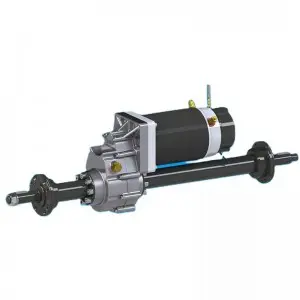Maintaining a lush and manicured lawn requires the right tools, and one of the most important parts of a lawn mower is the transaxle. If you’ve ever wondered how a lawn mower transaxle works, this blog post takes a deep dive into its inner workings. From understanding its function to exploring its individual components, we’ll uncover the secrets behind this important piece of machinery.
Learn about transaxles
A lawn mower transaxle, also known as a drive shaft, is a critical part of your lawn mower drivetrain. It serves two main purposes: to transfer power from the engine to the wheels and to convert torque for speed and directional control. Essentially, it functions as a combination gearbox and axle, powering and supporting the mower.
Components of the transaxle
A typical lawn mower transaxle is made up of several key components that work together seamlessly to keep it functioning properly:
1. Input Shaft: The input shaft is connected to the crankshaft of the engine and receives power from it. It transmits this power to the rest of the transaxle.
2. Transmission: The transmission houses a set of gears that regulate the speed and torque of the transaxle. By controlling the meshing of these gears, different speed ranges and drive modes can be achieved.
3. Differential: The differential is responsible for distributing the engine’s torque evenly between the drive wheels. This assembly allows the mower to turn smoothly while maintaining power to both wheels.
4. Transaxle Case: The transaxle case acts as a protective cover, enclosing all internal components and providing necessary support. It also contains lubricating oil to prevent friction and keep the gears running smoothly.
How does it work?
To understand how a lawn mower transaxle works, let’s break down the process step by step:
1. Power Transmission: When the engine generates power, it is usually transmitted to the input shaft through a series of belts or drive pulleys. The input shaft rotates, transmitting power to the gearbox.
2. Variable speed: Inside the gearbox, different gears are engaged or disengaged to adjust the speed and torque of the mower. These gears can be shifted manually or automatically, depending on the design of the mower.
3. Torque distribution: Once the power is conditioned within the transmission, it is transferred to the differential. Here, the differential ensures equal distribution of torque between the drive wheels, allowing the mower to turn smoothly without losing power.
4. Wheel spins: Finally, power reaches the wheels, causing them to spin. The drive wheels propel the mower forward or backward based on user input.
maintenance and maintenance
To keep your lawn mower transaxle in top condition, it needs regular maintenance. Here are some important tips:
1. Check the oil level: Make sure the transaxle is well lubricated to prevent excessive friction and wear on the gears.
2. Clean and Inspect Gears: Remove any grass or debris that may have accumulated in the transaxle case. Check the gears regularly for any signs of damage or excessive wear.
3. Proper Operation: Avoid sudden jerks or overloads of the mower as these actions place unnecessary stress on the transaxle.
in conclusion
An integral part of any lawn mower, the transaxle increases efficiency and control when maneuvering your yard. Knowing how it works and performing regular maintenance will not only prolong the life of this critical component, but also ensure a flawless mowing experience. So next time you pick up a lawn mower, take a moment to appreciate the intricate inner workings of its transaxle.
Post time: Jul-05-2023

